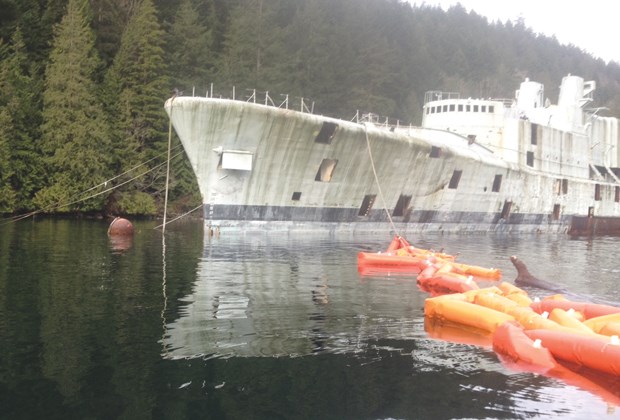Canada’s federal court has given the OK for the Artificial Reef Society of B.C. to sink the decommissioned Royal Canadian Navy destroyer Annapolis in Howe Sound’s Halkett Bay.
The ARSBC announced it plans to sink the ship in January, however the Save Halkett Bay Marine Park Society, which is made up of Gambier Island homeowners opposed to the project, temporarily halted the sinking with a court injunction.
After conducting their own testing, the group said the ship’s paint still contained tributyltin (TBT), an anti-fouling agent used to keep marine life from growing on ship hulls.
The group argued that the federal minister erred in granting a disposal at sea permit since TBTs were, they alleged, a banned substance.
But their application, the judge ruled, was essentially too little, too late — too little chemical remaining on the hull for it to pose an environmental threat and too late to meet the 30-day statutory requirement for filing for a review of the minister’s decision.
The amount of TBT allegedly remaining on the hull would be .004 to .008 per cent of what would be expected in fresh anti-fouling paint, which would be an allowable amount under legislation in Canada, the U.S. and Australia, the judge found.
As for timing, the judge agreed that the Save Halkett Bay group prejudiced the Artificial Reef Society by waiting until just before the planned sinking to file its application, heightening the risk the ship would sink “accidentally at an undesirable location.”
The outcome was expected yet still comes as a relief, said Howard Robins, ARSBC president.
“We’re not surprised by that ruling. We understood that we were compliant with the regulations. That’s what we were basing our defence on — fundamentally that we were within the regulation guidelines,” he said.
Robins said the group was concerned the ship would sink on its own outside the intended spot due to its condition.
Reef society volunteers are now mobilizing to tow the 113-metre vessel into place, anchor it to concrete blocks and then use specially designed explosive charges to punch holes in the hull allowing it to sink about 32 metres to the sea floor.
Once inspected, the ship will be open to be explored by qualified divers.
“We’re thrilled so we’re moving forward as fast as possible to get the job done,” Robins said.
The ruling comes as a disappointment for the Save Halkett Bay group.
“We’re still extremely concerned about the paint,” said spokesman Gary MacDonald, noting a U.S. group that had offered to buy the Annapolis had promised to remove the paint “as a matter of course.”
“We’re puzzled about why the court wouldn’t have ruled conservatively in favour of human and environmental health. Certainly no one who uses Halkett should be eating shellfish, crab or prawns from the bay until the ARSBC proves through independent research that the TBT isn’t entering the food chain.
“In theory we could appeal. But we won’t.”
The judge ordered the Save Halkett Bay society to pay legal costs of ARSBC and the federal government.
The Annapolis was commissioned in 1964 and remained in serviced until 1996.



